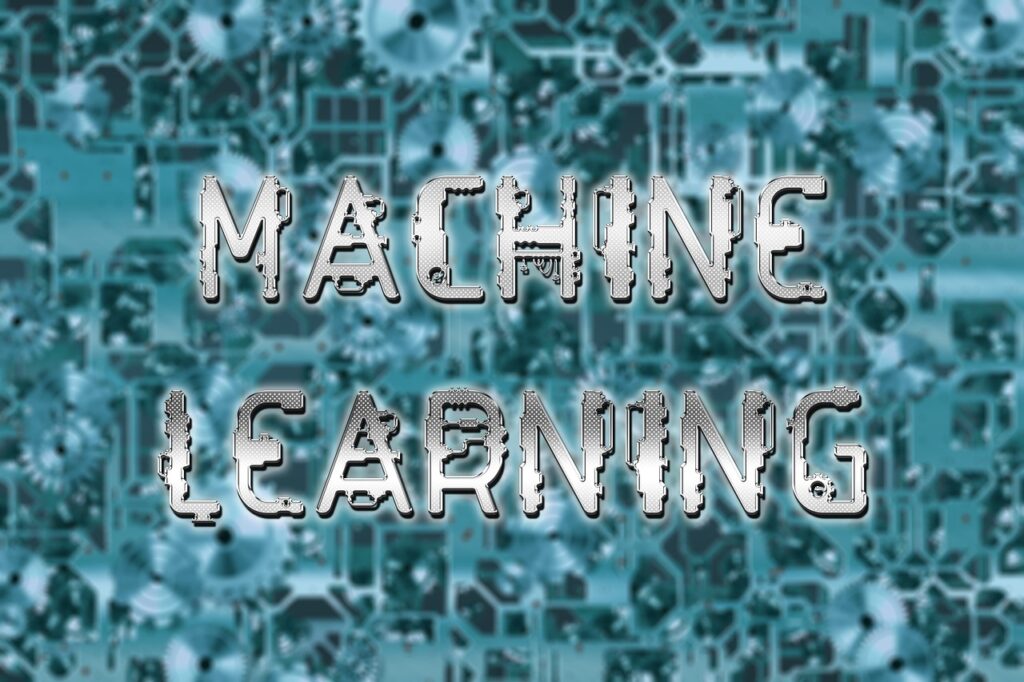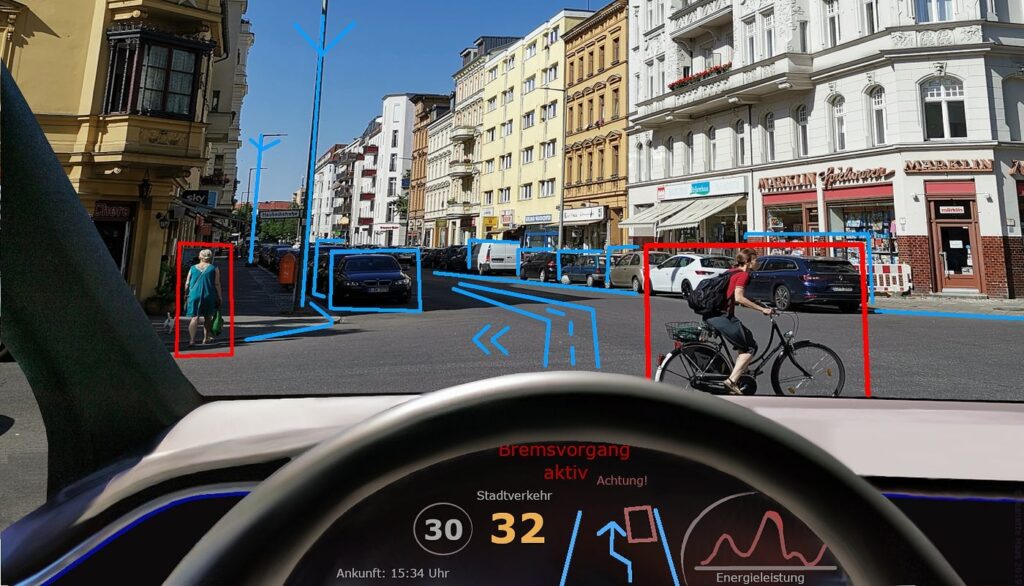Introduction
Machine learning is like giving computers the ability to learn and make decisions without being explicitly programmed. Instead of following specific instructions, they use algorithms and statistical models to analyze data, recognize patterns, and improve their performance over time. It’s like teaching computers to learn from experience and get better at tasks without human intervention at every step.

Understanding Machine Learning (M L)
M L is essentially a type of artificial intelligence (AI) that enables computers to learn from data and improve their performance on a task over time. Instead of being explicitly programmed for a task, machines use algorithms that allow them to learn patterns and make predictions or decisions based on the data they’ve been trained on.
There are different types of machine learning, but a common approach involves training a model on a set of data and then testing its performance on new, unseen data. The model learns from its mistakes and adjusts its parameters to improve accuracy.
In a nutshell, machine learning is about creating algorithms that can generalize and adapt to new data, making them valuable for a wide range of applications, from image recognition to language processing and even game playing.
Applications of Machine Learning
Healthcare
In the healthcare sector, machine learning aids in diagnostics, personalized treatment plans, and drug discovery, ushering in an era of precision medicine.
Finance
Financial institutions leverage machine learning for fraud detection, risk management, and algorithmic trading, enhancing the security and efficiency of the financial landscape.
Marketing
Marketing campaigns become more targeted and effective with machine learning, optimizing customer segmentation, and predicting consumer behavior.
Self-driving Cars
The automotive industry integrates machine learning to develop autonomous vehicles, promising safer and more efficient transportation.
Image and Speech Recognition
ML is used in systems that can identify and interpret images or speech. This is applied in facial recognition, object detection, and voice-activated assistants.
Natural Language Processing (NLP)
ML algorithms enable computers to understand, interpret, and generate human-like text. This is used in chatbots, language translation, and sentiment analysis.
Gaming
ML is employed in creating intelligent and adaptive game characters, enhancing the gaming experience by tailoring it to individual players.
Predictive Maintenance
Industries use ML to predict when equipment or machinery is likely to fail, allowing for preventive maintenance and minimizing downtime.
Cybersecurity
ML helps in identifying and preventing security threats by analyzing patterns and anomalies in network traffic.
Predictive Maintenance
Industries use ML to predict when equipment or machinery is likely to fail, allowing for preventive maintenance and minimizing downtime.
How Machine Learning Works
M L operates through a series of steps, starting with data collection and preprocessing. The model is then trained using this data, allowing it to make predictions based on new information.
- Data Collection: The process starts with gathering relevant data related to the problem you want the machine to solve. This could be labeled data, where each example is paired with the correct output, or unlabeled data that the machine tries to make sense of.
- Data Preprocessing: Raw data is often messy and needs to be cleaned and organized. This involves handling missing values, scaling features, and converting data into a format suitable for the chosen M L algorithm.
- Choosing a Model: Based on the nature of the problem, you select a machine learning model. This could be a decision tree, neural network, support vector machine, or other algorithms. The choice depends on the type of data and the task at hand.
- Training the Model: This is where the magic happens. The model is fed with the labeled data, and it learns to recognize patterns and make predictions. During training, the algorithm adjusts its internal parameters to minimize the difference between its predictions and the actual outcomes.
- Validation and Testing: After training, the model is tested on new, unseen data to evaluate its performance. This helps ensure that the model generalizes well and isn’t just memorizing the training data.
- Fine-Tuning: If the model doesn’t perform as desired, adjustments are made. This could involve tweaking hyperparameters, collecting more data, or trying a different algorithm.
- Deployment: Once satisfied with the model’s performance, it’s ready for deployment. It can now make predictions or decisions on new, real-world data.
- Continuous Monitoring and Improvement: M L models need to be monitored in real-world scenarios. As the environment or data changes, the model might need updates or improvements to maintain its effectiveness.
Challenges in M L.
Despite its potential, M L faces challenges such as data quality and quantity, interpretability, and ethical concerns. Addressing these challenges is imperative for responsible and effective implementation.
While M L has made impressive strides, it does face several challenges:
- Data Quality: The performance of machine learning models heavily relies on the quality of the data they are trained on. Noisy or biased data can lead to inaccurate predictions and decisions.
- Lack of Transparency: Some M L models, especially complex ones like deep neural networks, are often considered as “black boxes” because it’s challenging to understand how they arrive at a particular decision. Interpretable models are crucial, especially in sensitive domains like healthcare or finance.
- Overfitting and Underfitting: Balancing a model’s ability to generalize to new data (avoiding overfitting) while still capturing the underlying patterns (avoiding underfitting) is a common challenge in M L.
- Computational Resources: Training sophisticated M L models, particularly deep neural networks, requires significant computational power. This can be a bottleneck for smaller organizations or researchers with limited resources.
- Ethical Concerns: Bias in data and algorithms can result in unfair or discriminatory outcomes. Ensuring fairness, transparency, and accountability in M L systems is a growing concern.
- Data Privacy: As M L often involves analyzing personal or sensitive data, privacy issues arise. Striking a balance between extracting valuable insights and respecting individual privacy is a challenge.
- Interpretable AI: Understanding and trusting AI systems is crucial, especially in critical applications like healthcare or autonomous vehicles. Making M L models more interpretable remains an ongoing challenge.
- Adversarial Attacks: Some M L models are vulnerable to adversarial attacks where subtle modifications to input data can lead to incorrect predictions. Robustness against such attacks is an active area of research.
- Continuous Learning: Many M L models are trained on static datasets, and adapting them to new, evolving data is a challenge. Ensuring models can learn continuously is crucial for real-world applications.
- Scarcity of Skilled Talent: There is a shortage of professionals with expertise in M L, leading to challenges in implementing and maintaining sophisticated systems.
Machine Learning in Everyday Life
M L has seamlessly integrated into our daily lives, often in ways we may not even be aware of. Here are some common examples:

- Virtual Assistants: Voice-activated virtual assistants like Siri, Alexa, or Google Assistant use M L to understand and respond to natural language commands, making tasks like setting reminders or playing music hands-free.
- Social Media: M L algorithms power content recommendations on platforms like Facebook, Instagram, and Twitter. The posts, ads, and suggestions you see are tailored based on your preferences and interactions.
- Online Shopping: E-commerce platforms leverage M L for personalized recommendations. The “Recommended for You” or “Similar Products” sections use algorithms to analyze your past purchases and browsing behavior.
- Email Filtering: Spam filters in email services employ M L to identify and filter out unwanted emails. These systems learn from user feedback and continuously improve their ability to distinguish between spam and legitimate messages.
- Navigation Apps: M L enhances the accuracy of navigation apps like Google Maps or Waze. These apps analyze real-time traffic data to provide the most efficient routes, taking into account current road conditions.
- Language Translation: Services like Google Translate use M L to improve language translation. The algorithms learn from vast amounts of multilingual data to provide more accurate and contextually appropriate translations.
- Smart Home Devices: Devices like smart thermostats, lights, and security systems use M L to adapt to your preferences and routines. They learn when you’re home, adjust temperatures, and optimize energy usage.
- Health and Fitness Apps: Wearable devices and health apps often incorporate M L for tracking and analyzing fitness and health data. They can provide insights into sleep patterns and activity levels and offer personalized health recommendations.
- Recommendation Systems in Streaming Services: Platforms like Netflix and Spotify use M L to analyze your viewing or listening history and suggest content tailored to your preferences.
- Fraud Detection in Banking: Banks employ M L algorithms to detect unusual patterns in transactions and identify potential fraudulent activities, enhancing the security of financial transactions.
Future Trends in M.L.
As technology evolves, M L is expected to witness advancements in deep learning, improved exploitability, and increased integration with other cutting-edge technologies.
Looking ahead, several exciting trends are expected to shape the future of M L:
- Explainable AI (XAI): Addressing the “black box” issue, there’s a growing emphasis on making machine learning models more interpretable. Explainable AI aims to provide insights into how models make decisions, increasing transparency and trust.
- Federated Learning: This approach allows training machine learning models across decentralized devices or servers while keeping data localized. It’s a privacy-preserving technique and is gaining traction in applications like healthcare and edge computing.
- AI at the Edge: As the Internet of Things (IoT) expands, there’s a trend towards deploying machine learning models directly on edge devices. This reduces latency, enhances real-time processing, and conserves bandwidth.
- AutoML (Automated Machine Learning): The focus is on making machine learning more accessible to non-experts. AutoML tools automate the process of model selection, hyperparameter tuning, and feature engineering, streamlining the development of machine learning applications.
- Generative Adversarial Networks (GANs): GANs, a type of neural network architecture, are gaining popularity for generating realistic synthetic data. They have applications in image synthesis, content creation, and data augmentation.
- Ethical AI and Responsible AI Practices: There’s a growing awareness of the ethical implications of AI and machine learning. Future trends involve integrating ethical considerations into the development process, addressing bias, fairness, and societal impact.
- Quantum Machine Learning: As quantum computing advances, it holds the potential to revolutionize machine learning. Quantum algorithms may significantly speed up certain types of computations, solving complex problems more efficiently.
- Continual Learning: Instead of training models on static datasets, there’s a shift towards models that can adapt and learn continuously from new data. This is crucial for applications where the environment is dynamic and evolves over time.
- AI in Healthcare: Machine learning is expected to play a pivotal role in personalized medicine, drug discovery, and predictive analytics for patient outcomes. Diagnostic tools leveraging AI are likely to become more prevalent.
- Edge AI for Robotics: As robotics become more sophisticated, the integration of edge AI allows robots to process information locally, enabling quicker responses and more autonomy in various applications, including manufacturing and healthcare.
Navigating Tomorrow with Machine Learning
Machine learning serves as a catalyst for innovation across various industries, offering solutions to complex problems and driving progress in unprecedented ways.
Navigating tomorrow with machine learning holds immense potential for transformative advancements across various domains. Here’s a glimpse into how machine learning could shape the future:
- Smarter Healthcare: Machine learning can revolutionize healthcare with predictive analytics, personalized treatment plans, and early disease detection. AI-powered diagnostic tools and continuous health monitoring may become standard, enhancing patient care.
- Precision Agriculture: Machine learning in agriculture can optimize crop yields, reduce resource wastage, and predict disease outbreaks. Smart farming techniques, driven by data analytics, may lead to more sustainable and efficient agricultural practices.
- Autonomous Transportation: The future might see widespread adoption of autonomous vehicles and smart traffic management systems. Machine learning algorithms enable vehicles to navigate complex environments, reducing accidents and improving traffic flow.
- Education Personalization: Adaptive learning platforms driven by machine learning can tailor educational experiences to individual needs. This personalized approach helps students learn at their own pace, with customized content and feedback.
- Climate Change Mitigation: Machine learning can contribute to environmental monitoring and climate modeling. Predictive algorithms may assist in understanding and addressing climate change by analyzing complex environmental data.
- Enhanced Cybersecurity: As cyber threats evolve, machine learning can play a crucial role in detecting and preventing security breaches. Adaptive algorithms can identify patterns indicative of malicious activities in real-time.
- Financial Intelligence: Machine learning algorithms can analyze vast financial datasets for better risk management, fraud detection, and investment strategies. Automated trading systems driven by AI may become more prevalent.
- Personalized Customer Experiences: Businesses can leverage machine learning to provide highly personalized products and services. From recommendation engines to virtual shopping assistants, customer interactions can be tailored to individual preferences.
- Human-Machine Collaboration: The future workplace may see increased collaboration between humans and machines. AI-powered tools can handle routine tasks, allowing humans to focus on more complex, creative, and strategic aspects of their work.
- Global Accessibility: Machine learning can contribute to bridging the digital divide by providing access to information and services in remote or underserved areas. Smart technologies can empower communities and individuals worldwide.
Navigating tomorrow with machine learning involves not just technological advancements but also careful consideration of ethical, societal, and regulatory implications. As these technologies continue to evolve, fostering a responsible and inclusive approach will be key to harnessing their full potential for positive impact.
Benefits of Implementing Machine Learning
Increased Efficiency
Automating tasks through machine learning leads to increased efficiency, allowing businesses to focus on strategic initiatives.
Better Decision-Making
Machine learning aids in data-driven decision-making, providing valuable insights for informed choices.
Competitive Advantage
Organizations embracing machine learning gain a competitive advantage by staying ahead of the technological curve and adapting to changing landscapes.
Machine Learning and the Job Market
As machine learning continues to evolve, new job roles emerge, creating demand for professionals with expertise in data science, artificial intelligence, and machine learning.
Educational Resources for Machine Learning
Enthusiasts and professionals looking to delve into machine learning can explore a plethora of online courses, certifications, and practical projects to enhance their skills.
Case Studies
Real-world examples highlight the tangible impact of machine learning, showcasing success stories from companies that have effectively implemented these technologies.
Addressing Common Misconceptions about Machine Learning
Dispelling myths surrounding machine learning is essential for fostering a clear understanding of its capabilities and limitations.
Ethical Considerations in Machine Learning
Addressing bias in algorithms and promoting responsible AI practices is crucial to ensuring the ethical deployment of machine learning technologies.
Conclusion
In conclusion, machine learning is not just a technological advancement; it’s a paradigm shift shaping the future. Embracing its potential while being mindful of challenges and ethical considerations will pave the way for a more innovative and responsible integration of machine learning into our daily lives.
FAQs
- Is machine learning only for tech-savvy individuals?
- No, machine learning is accessible to anyone willing to learn. Numerous educational resources cater to beginners and professionals alike.
- Can M L completely replace human decision-making?
- M L enhances decision-making by providing valuable insights, but human judgment remains crucial for ethical considerations and nuanced decision-making.
- How is bias addressed in M L algorithms?
- Ethical AI practices involve rigorous testing, transparency, and continuous monitoring to identify and rectify biases in M L algorithms.
- What are the key skills needed for a career in M L?
- Skills such as programming, statistics, data analysis, and domain-specific knowledge are essential for a successful career in M L.
- Where can I find practical projects to apply my M L knowledge?
- Online platforms and educational websites offer a plethora of datasets and project ideas for hands-on experience in applying M L concepts.









yandanxvurulmus.WnxxaJbAVlxT